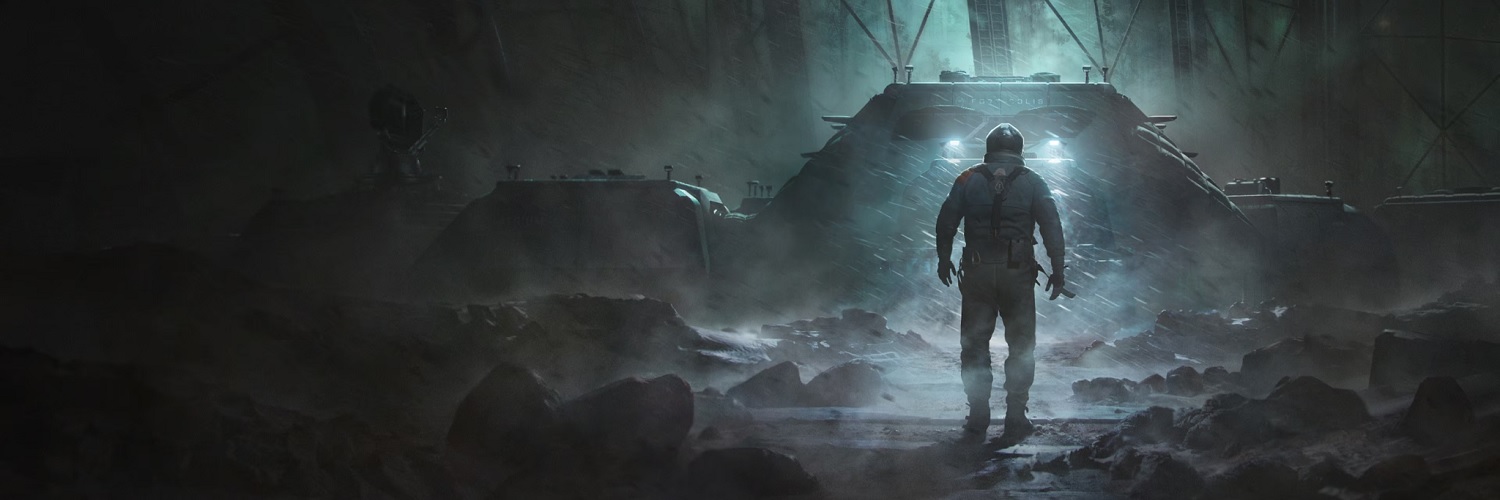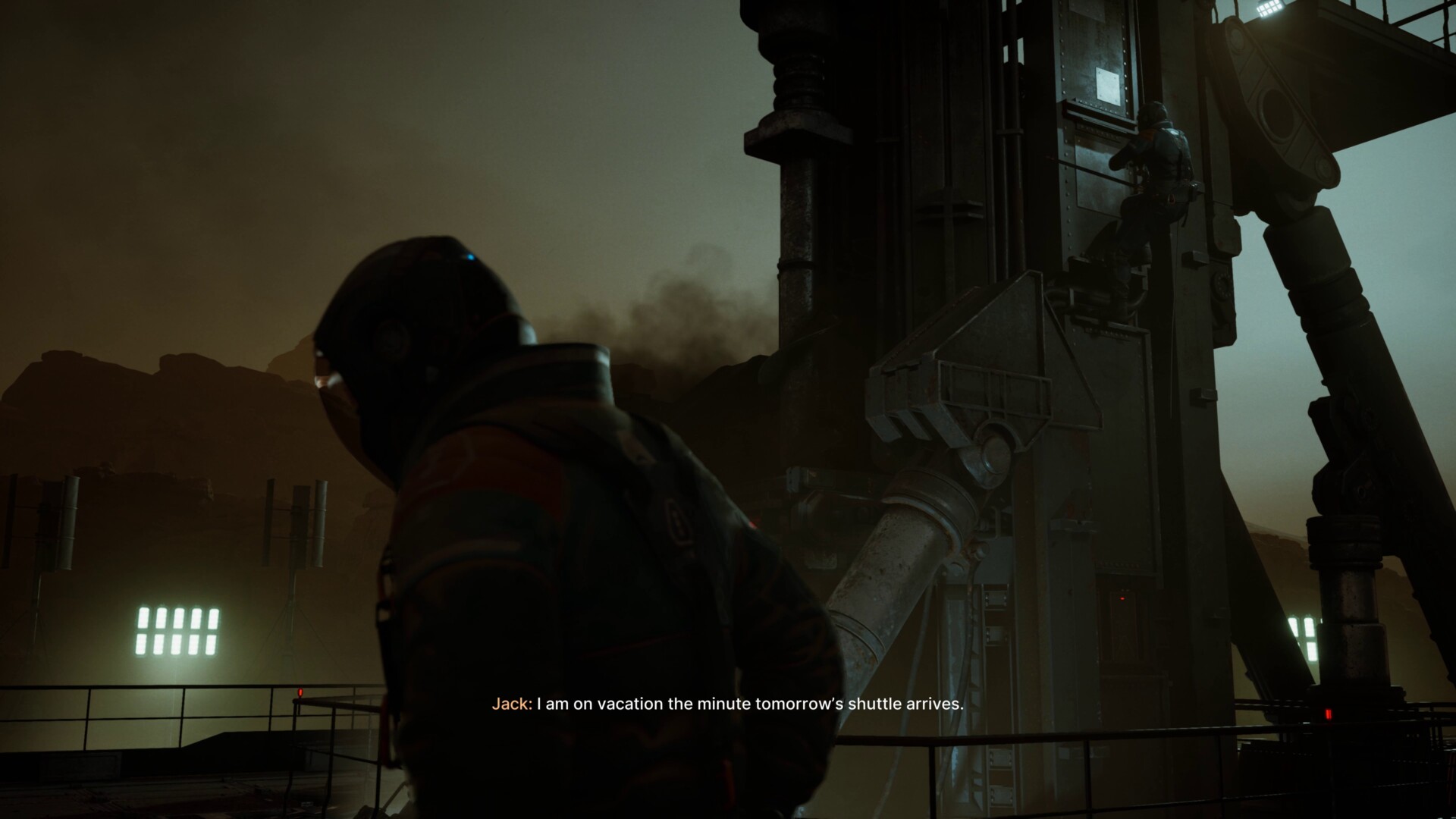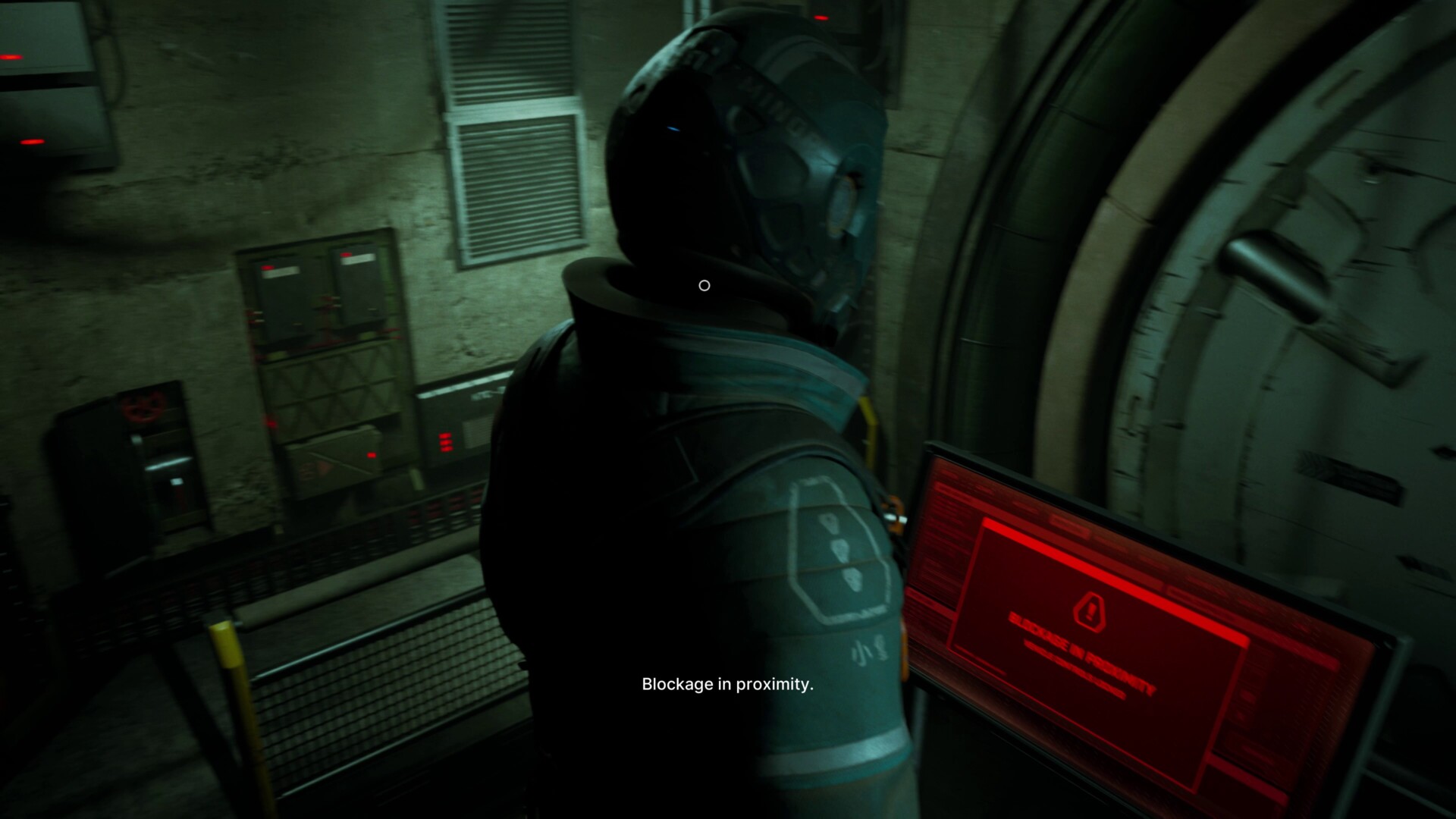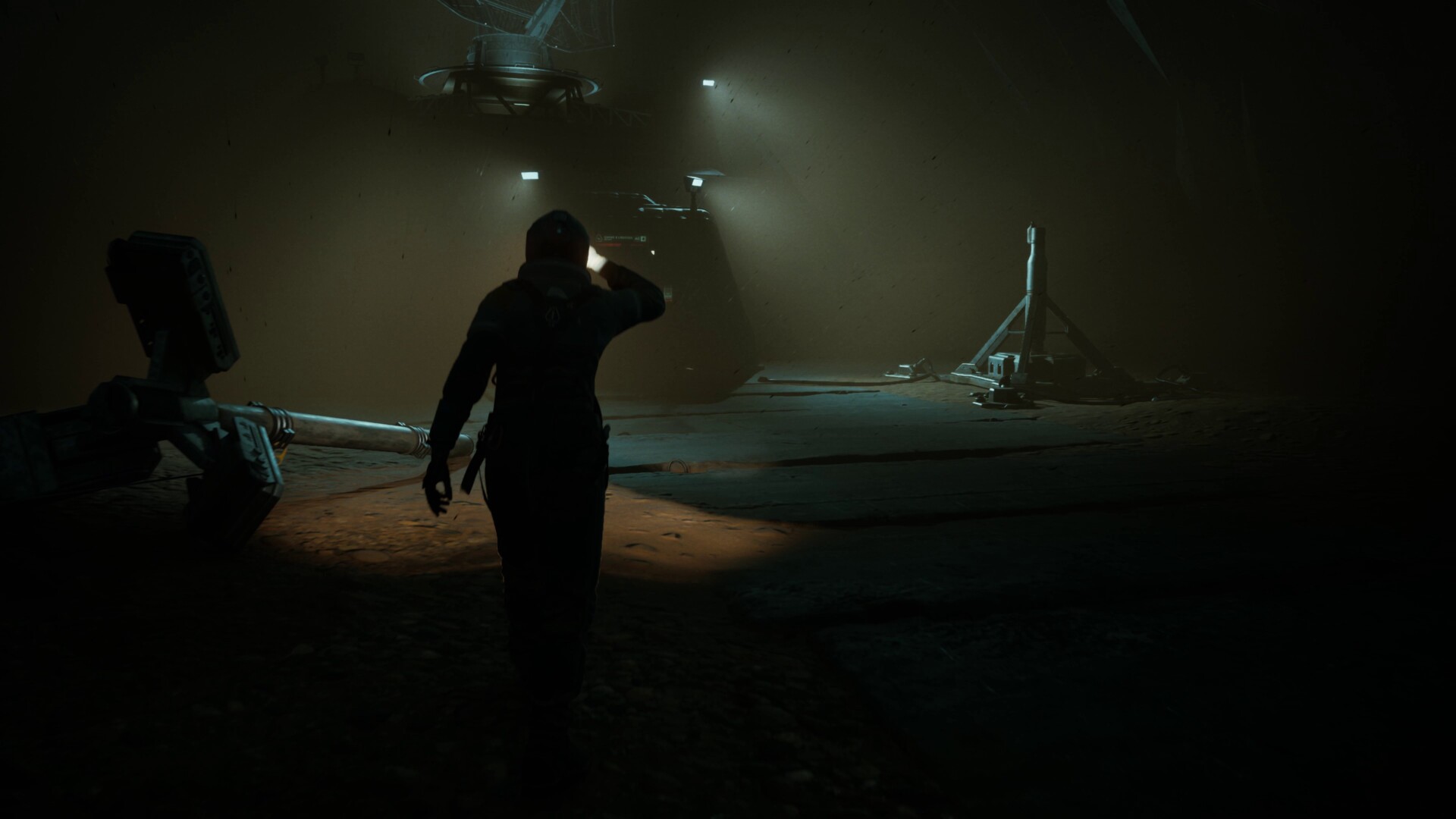
Fort Solis PC Review
Fort Solis is a heavily focused narrative and rather beautiful-looking game by newly formed indie developers Fallen Leaf, and Black Drakkar Games, that centres more on character performance and visuals rather than being a video game. That is not a bad thing. There are plenty of great games that fall more on the side of interactive novels or games dubbed “walking simulators”. They usually offer some excellent stories to become engrossed in, while still involving the player to perform some actions or solve a few puzzles while walking around. But Fort Solis stumbles when it comes to player interaction, mainly because there is not much to do, but one big impactful issue on the experience is the player cannot run, and this causes a lot of pacing and exploration problems that should not be present in a game where the importance on pace and active story beats need to flow well.
Set on Mars in the year 2080, the red planet has become a mining facility where our two main characters, Jack Leary and Jessica Appleton, are engineers who are in the middle of a repair on the open surface of a rather stormy Mars. During this maintenance, a distress call from Fort Solis, the closest mining facility, is picked up on the radio as the base initiates a full lockdown. Finding this rather surprising, Jack leaves Jessica to finish the repair job as Jack goes to the base to find out what has happened.

Jack and Jessica have a lot of interaction over the radio, showcasing their strong friendship as Jack explores the unknown with a jokey Jessica backing him up on comms. It reminded me of games like Firewatch, always having a person in the ear which helps remove the sense of loneliness in space and acts as a way to say everything else is still normal on Mars between these two colleagues, even if the base is in lockdown. Their banter and friendship come across with superb voice acting from Roger Clark and Julia Brown, the former well-known as Arthur Morgan in Red Dead Redemption 2. Julia Brown, on the other hand, is more known for TV work as this is her first journey into video games but holds her own with a strong performance. Troy Baker also makes an appearance and as one would expect, does a great shift in his role.
For a game that lasts over three hours, not much really goes on in Fort Solis. On Steam, it advertises itself as “Like a Netflix series, Fort Solis can be binged in one intense session, or played chapter by chapter like an episodic TV show”. I would personally advise doing the latter because, like some TV shows, there are a lot of parts in Fort Solis where nothing purposely happens. There is a story that starts off slow, and this helps it build a strong sense of the unknown and tension during the dark and grim-lit mining station. Why is this mining building on lockdown? Where are all the inhabitants? Exactly what is going on and what were they doing here? That is all left to the player to discover during the first couple of chapters as players dig through emails and find pictures and video logs contained within Fort Solis’ metal corridors and rooms.

As the plot unravels, things become dissatisfying. It starts well with the mystery, but the outcome falls flat with a reveal and climatic scene feeling generic. There is nothing all that exceptional about the truth of what happened, and compared to other space-themed games, such as the recently released Dead Space remake and The Callisto Protocol, both had more exciting stories to participate in, but with more involving gameplay to back that up. It also does not help that most of the reveal is near the end and it feels like it comes fast, almost as if it was rushed to squeeze it in. I was left feeling underwhelmed with the overall story that was presented to me. Maybe it was because I had just watched Rabbit Hole the week before and was expecting twists and turns in a thriller, but it was a subdued outcome.
The bulk of the game is walking around Fort Solis looking for clues within the environment or interacting with elements that are throwaway, such as an exercise machine or film posters to activate dialogue between Jack and Jessica that reference the material or simply throwing some banter between each other. It was always pleasant to hear the duo talk, no doubt one of the highlights of the game. As for the game’s challenge, this comes in the form of discovering where to go by finding keycards that the story pinpoints to collecting to open previously locked doors. This is to keep the linear experience on track so that players are not diverting away from the pacing. But, this is an area where it begins to fall apart towards its last third, as more areas are open, there is more chance to go the wrong direction or walk towards a locked room, which means having to walk all the way back, and since there is no run button, this is a painfully lengthy process.

This is made much worse when one scene requires the player to go outside. Walking along the surface to the next room is made awful by the fact that if you misread the map on the character’s arm, spending a few minutes walking in the wrong direction and then having to walk back is such a poor design to include. They say the reason is to keep pacing with dialogue, but this makes no sense during this part of the game as there is no dialogue spoken once Jack initially walks out of the door onto the surface again within the confines of Fort Solis. Along with the stiff animation response, the lack of running hurt the experience, and there were points where I was bored walking from one point to another when nothing was happening, and this just made me not want to explore the facility. It is a frustration limitation that does not need to be imposed on the game. If the game wants me to explore the beautifully rendered base, let me do it with speed. Double important when the game wants you to backtrack a few times, which makes it a drag. It also adds a strange sense of disbelief when a tense scene has just happened…but then you walk away from the danger rather than sprinting, as one would expect when a certain scene that I do not want to spoil happens near a doorway that is assaulted.
Away from the exploration and light investigation, the rest of the game’s scenes revolve around quick-time events with directional presses or button presses when prompted by the on-screen symbols. These are simple, be it dodging something, pushing apart a broken door or hacking a system by timing a few button presses to a line on a chart. This is nothing we have not seen before in other similar games, but apart from the last scene, not many of these seem to alter any outcomes. There are also no dialogue selections as such, so there is no deviation to the story, with the only change coming with the ending during the last few minutes. This is a shame, as I feel a game like this could do with something used in other titles such as Until Down/The Dark Pictures Anthology, or even the Telltale Adventure games that fans loved back when they first hit critical success with The Walking Dead.

There is no denying that Fort Solis is a visually standout title. This is another recent game to use Unreal Engine 5 and what comes with that are some incredibly detailed environments, beautiful lighting, and rather splendid animation across the modelled characters and facial expressions; everything is immaculately presented. It should also be noted that the audio is solid, too, and helps with setting the mood in the environment, be it outside within the savage storm or inside the empty base with the rattling of tubes and other noises. The overall presentation is top-notch. The problem, though, is the resource hog that Unreal Engine 5 seems to be. This game cannot run natively at 4K 60fps 100% of the time on an RTX 4090, which seems ridiculous when you think about the power available with that card, but to hit the target requires using frame generation and Quality settings on DLSS to hit frame rate over 100. Removing frame generation will leave the game in around the 70-80s but has the potential to drop under 60fps at times.
Fallen Leaf was clearly aiming to put storytelling and exceptional visuals as its main targets with Fort Solis. They easily achieved the latter. The added talent that well-known voice actors bring to the game no doubt helps Fort Solis achieve that objective. The problem is there needs to be more than that. The story must be consistent and engaging from beginning to end, and what starts as a strong introduction becomes a letdown towards the finale with a rushed reveal which sadly disappoints and lacks a rewarding end that great thrillers implement. The quality visuals are great eye candy, but trying to move around the environment at a snail’s pace ends up being a frustrating experience and has a detrimental effect on wanting to check out the mining facility and hurts the overall pacing of the game. There is stuff to like in Fort Solis, but while it has best-in-class visuals for this type of game, it sadly lacks in other areas making it weaker than some of its compatriots in the genre. An impressive game on the one hand, but lacklustre on the other, There are some things to like about Fort Solis, but the actual interaction element can become a test of patience when walking around such a visually impressive mining facility becomes a slog.
